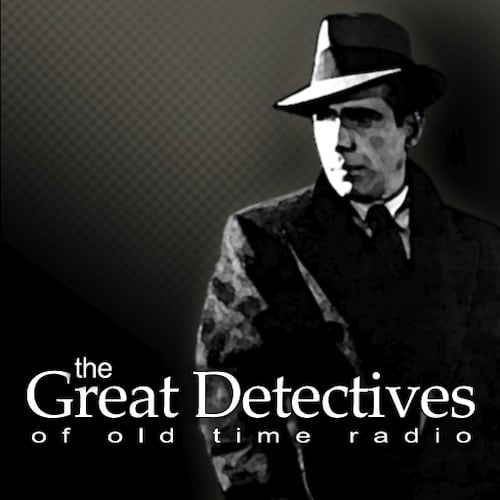Past Posts: 11-15, 16-20 and honorable mentions.
10) Mr. Monk and the Sleeping Suspect (Season 2, Episode 7):
A beautiful woman is murdered by a mail bomb. Monk thinks her brother committed the crime. The problem? The brother Monk identifies has been in a coma for months. This case was a real puzzle as Monk has to find out how the comatose man perpetrated a seemingly impossible murder. In addition to this, with Dr. Kroger out of town, in lieu of therapy, Monk talks out his problems with the still comatose suspect.
9) Mr. Monk and the Secret Santa (Season 4, Episode 9): At an office Christmas Party, poisoned wine that was sent to Captain Stottlemeyer. The episode is clearly the best of the four Monk Christmas episodes with a right mix of mystery, comedy, and sentiment.
8 ) Mr. Monk and Dale the Whale (Season 1, Episode 4): Dale “the Whale” Biederbeck appears to be “the guy” in the killing of a woman as witnesses claim to have seen the 800 pound man in the house of a murdered woman on the night she was killed, but the bed-bound Biederbeck couldn’t possibly have even gotten through the doorway.
Biederbeck is a personal enemy of Monk’s, vindictive and spiteful. He sued Trudy over an unflattering article and sent the Monks into bankruptcy.
The way Monk solves the case is genius as was the case with most of the Monk episodes. The denoument is somewhat reminiscent of Poirot particularly when Monk says the phrase, “A very fat man.”
I should add that this isn’t the last that the series would see of “Dale the Whale.” Appeared twice more and in each of three appearances, he was played by a different actor. So fans can compare their favorite. Tim Curry’s version was mine. Dale always seemed to know more about Trudy’s death than he let on, and had a mix of power, cunning, and ruthlessness working for him. It always seemed to me that the writers could have done more with him than they did.
7) Mr. Monk and the End (Season 8, Episode 15 and 16): There’s much to like about Mr. Monk and the End. First of all, it actually gives Monk’s story an ending. This itself is rare in detective fiction. Historically, this is very rare for detective series. Think about the Columbo or The Rockford Files and you realize that the detective show typically goes out unplanned with a whimper.
In the course of investigating a murder at the same place he’d been when he learned at Trudy’s death, Monk gets too close for comfort to finding his wife’s killer, who orders Monk killed. The assassin poisons an item in Monk’s grocery cart.
The doctor informs Monk that the poison will kill him in a matter of days and that not only had someone tried to murder Monk, but that they may have succeeded. The doctors can develop an anti-toxin if they can find the source of the poison in time.
The police set out to find Monk’s killer before it’s too late. When hope appears to be lost, Monk finally discovers a clue to the identity of Trudy’s murderer, but is it too late? Will Monk run out of time before the killer does?
The overarching plot of the two part episode is a great homage to that Noir Classic, DOA which features a hero (played by Edmond O’Brien) who has been murdered with luminous poisioning and seeks to find the killer before the poison runs its course.
“Mr. Monk and the End” has moments of high-level dramatic intensity and while there’s not a whole lot of mystery in this story, Monk does some fancy deduction at the end.
The show also had some very comedic moments as well, particularly when Monk is told about the poison and its effects:
Dr. Shuler: You’re gonna feel normal for a while. And then there’s gonna be some vomiting, followed by death.
Monk: Vomiting?
Dr. Shuler: That’s right. Followed by death.
Monk: Vomiting.
Dr. Shuler: Yes. Followed by death.
Monk: Vomiting!
Dr. Shuler: Adrian, I really need you to focus on the last part of that sentence. There’s gonna be some vomiting and then death.
Monk: Is there any chance death could come before the vomiting?
There are a few points to criticize the episode on. What became clear from watching the episode, it seemed to me that the writers really hadn’t thought of who’d killed Trudy and that over the course of the show they threw out random clues (“the six fingered man,” “the judge,”) and in this episode had to find some way to come to a coherent conclusion. They succeeded mostly, but had they had more of an idea as to the who and why of Trudy’s murderer, it would have flowed a bit better.
I did appreciate how they brought most of the characters (Disher, the Captain, Monk) to some point of change in their lives, but their effort to insert a love interest for Natalie into the story with no foreshadowing in prior episodes (as happened with Disher and the Captain) was clunky.
One criticism I’ve read of the episode is that some think the actual reason for Trudy’s murder was too “soap operaish.” Some would hope that the reason for the murder would be something big like a corporate scandal or a political cover up rather than something personal. Without giving away the ending, I’ll say that I understand why the writers chose to play it the way they did. They’re ultimate goal with the ending was not just to wrap up Monk’s case, but to give a satisfying change in direction to Monk’s life. Mere vengeance or catching the bad guy wouldn’t do that. The way they wrote this episode was a master stroke and a fitting end to the 21st Century’s best detective, complete with a new Randy Newman song written especially for the end.
6) Mr. Monk and the Billionaire Mugger (Season 1, Episode 7): A mugger jumps out with a knife to rob a man. The man promptly shoots him in self-defense. A uniformed police officer is seen fleeing the scene. When its revealed that the mugger is a billionaire and the media begins talking down the department for the actions of “Fraidy Cop,” Monk is called in.
The episode was both uproariously funny and at the same time, a classic mystery puzzle.
Next week: the top 5.
If you enjoyed this post, you can have new posts about Detective stories and the golden age of radio and television delivered automatically to your Kindle.

